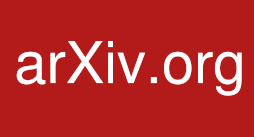Document detail
ID
oai:arXiv.org:2406.17251
Topic
Computer Science - Machine Learnin... Computer Science - Artificial Inte...Author
Chen, Yuzhou Frias, Jose Gel, Yulia R.Category
Computer Science
Year
2024
listing date
7/3/2024
Keywords
gcl persistence learning topological extendedAbstract
Graph contrastive learning (GCL) has recently emerged as a new concept which allows for capitalizing on the strengths of graph neural networks (GNNs) to learn rich representations in a wide variety of applications which involve abundant unlabeled information.
However, existing GCL approaches largely tend to overlook the important latent information on higher-order graph substructures.
We address this limitation by introducing the concepts of topological invariance and extended persistence on graphs to GCL.
In particular, we propose a new contrastive mode which targets topological representations of the two augmented views from the same graph, yielded by extracting latent shape properties of the graph at multiple resolutions.
Along with the extended topological layer, we introduce a new extended persistence summary, namely, extended persistence landscapes (EPL) and derive its theoretical stability guarantees.
Our extensive numerical results on biological, chemical, and social interaction graphs show that the new Topological Graph Contrastive Learning (TopoGCL) model delivers significant performance gains in unsupervised graph classification for 11 out of 12 considered datasets and also exhibits robustness under noisy scenarios.
Chen, Yuzhou,Frias, Jose,Gel, Yulia R., 2024, TopoGCL: Topological Graph Contrastive Learning


Clinical Relevance of Plaque Distribution for Basilar Artery Stenosis
study endovascular imaging wall basilar complications plaque postoperative artery plaques stenosis

